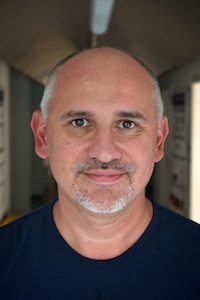


In this talk, I will discuss charge transport in complex forms of graphene (chemically reduced graphene oxides and polycrystalline graphene), of relevance for current and future applications in flexible electronics, transparent electrodes, energy harvesting devices and spintronics. The key role of predictive modelling (comprising multiscale simulation) will be outlined, as enabling tool for new discoveries and for material benchmarking and quantum device profiling. One will focus on the issue of structural imperfections introduced either during the wafer-scale production of graphene with chemical growth (CVD), or through the mechanical/chemical exfoliation and chemical transfer to versatile substrates. Fundamental properties of charge transport in polycrystalline graphene, accounting the variability in average grain sizes and grain boundaries (as observed in real samples grown by CVD) will be discussed, together with their relevance for device optimization and diversification of technological functionalities, such as gas sensors, transparent electrodes and so forth.
Reference
Aron W. Cummings, D. Loc Duong, V. Luan Nguyen, D. Van Tuan, J. Kotakoski, J.E. Barrios Vargas, Young Hee Lee and S Roche, Charge Transport in Polycrystalline Graphene: Challenges and Opportunities, Advanced Materials 26, Issue 30, pages 5079-5094 (2014)



In this talk, I will discuss charge transport in complex forms of graphene (chemically reduced graphene oxides and polycrystalline graphene), of relevance for current and future applications in flexible electronics, transparent electrodes, energy harvesting devices and spintronics. The key role of predictive modelling (comprising multiscale simulation) will be outlined, as enabling tool for new discoveries and for material benchmarking and quantum device profiling. One will focus on the issue of structural imperfections introduced either during the wafer-scale production of graphene with chemical growth (CVD), or through the mechanical/chemical exfoliation and chemical transfer to versatile substrates. Fundamental properties of charge transport in polycrystalline graphene, accounting the variability in average grain sizes and grain boundaries (as observed in real samples grown by CVD) will be discussed, together with their relevance for device optimization and diversification of technological functionalities, such as gas sensors, transparent electrodes and so forth.
Reference
Aron W. Cummings, D. Loc Duong, V. Luan Nguyen, D. Van Tuan, J. Kotakoski, J.E. Barrios Vargas, Young Hee Lee and S Roche, Charge Transport in Polycrystalline Graphene: Challenges and Opportunities, Advanced Materials 26, Issue 30, pages 5079-5094 (2014)